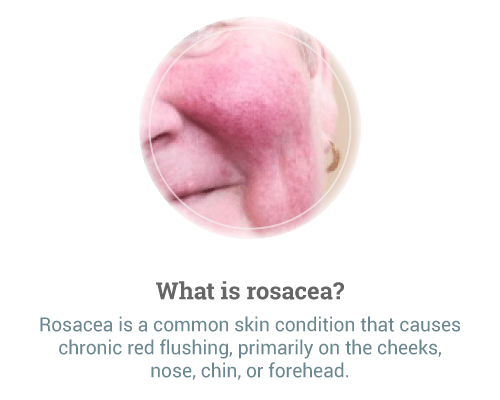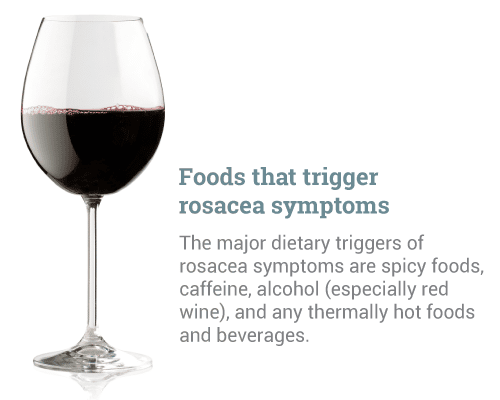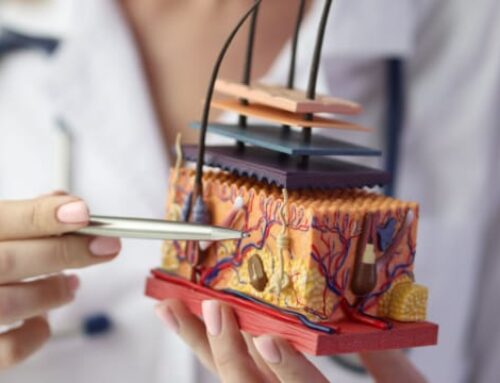Diet plays a role in the development of many different diseases. For instance, heart disease can be caused by eating a diet high in trans fats, whereas type 2 diabetes can develop due to a diet high in sugar. Interest in the role of diet in certain dermatologic conditions, such as acne and rosacea, has grown in recent years. While the association of diet and acne has been controversial and unclear, the role of diet in rosacea is much more accepted and established. In this post, we’ll be discussing what researchers have learned about how diet plays a role in rosacea.
What is rosacea?
Rosacea is a common skin condition that causes chronic red flushing, primarily on the cheeks, nose, chin, or forehead. These symptoms can often be debilitating and result in a decreased quality of life for many patients. Unfortunately, the exact cause of this condition is not well understood. Researchers have found that genetics, environmental triggers, and even certain microscopic organisms can all contribute to rosacea. Certain foods present environmental triggers that can exacerbate rosacea symptoms.

Foods that trigger rosacea symptoms
The major dietary triggers of rosacea symptoms are spicy foods, caffeine, alcohol (especially red wine), and any thermally hot foods and beverages. Additionally, there is a theory that foods that release histamine, such as eggplant, avocado, deep sea fish, soy sauce, chocolate, and cheese, should be avoided. This is because histamine, a compound naturally found throughout the body, causes redness and flushing by dilating blood vessels. Another approach to calming the inflammatory symptoms of rosacea is to eliminate or reduce pro-inflammatory foods, such as sugars and starchy foods.

Foods that improve rosacea symptoms
Since rosacea is an inflammatory condition, it is recommended to not only eliminate the pro-inflammatory foods mentioned above but also to include anti-inflammatory foods into your diet to tackle rosacea at its root. Below are a few examples of anti-inflammatory foods that you can incorporate into your diet to help control rosacea symptoms:
- Fruits and vegetables
- Healthy fats (i.e. coconut oil, olive oil, avocado, nuts and seeds)
- Anti-inflammatory herbs (i.e. turmeric, ginger, garlic)
While it’s clear that diet plays a role in rosacea, making these changes can be a slow process when it comes to resolving your rosacea symptoms. If you’re looking for a faster solution to the embarrassing red patches of skin and visible veins of rosacea, schedule a consultation with Dr. Krant to discuss safe and effective treatment options, such as the Cutera Excel V laser, the VBeam Perfecta, and Laser Genesis.















Leave A Comment